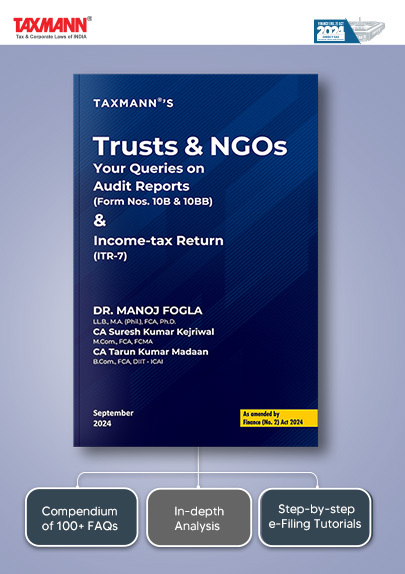Sale of Agricultural Land Not Taxable Though Purchaser Changed Land Use From Agriculture to Non-agriculture | ITAT
- Blog|News|Income Tax|
- 2 Min Read
- By Taxmann
- |
- Last Updated on 13 December, 2023
Case Details: Hiten Tulshibhai Engineer vs. Income-tax Officer - [2023] 157 taxmann.com 81 (Ahmedabad-Trib.)
Judiciary and Counsel Details
-
- Smt. Annapurna Gupta, Accountant Member & Miss Suchitra Raghunath Kamble, Judicial Member
- Anil Kshatriya, Adv. for the Appellant.
- Rajdeep Singh, Sr. DR for the Respondent.
Facts of the Case
During the year under consideration, the assessee sold four pieces of agricultural land to a company. The assessee contended that the land sold by him did not qualify as “capital asset” in terms of section 2(14)(iii) being “rural agricultural land”, and therefore, the capital gain earned was not taxable.
Assessing Officer (AO) noted that the land was purchased for “industrial purposes” under section 63AA of the Gujarat Tenancy and Agricultural Lands Laws (Amendment) Act, 1997. Thus, he treated said land as “non-agricultural land”.
On appeal, the Commissioner (Appeals) also upheld the finding of the AO, and the matter reached the Ahmedabad Tribunal.
ITAT Held
The Tribunal held that section 63 of the Gujarat Tenancy and Agricultural Lands Laws (Amendment) Act, 1997, prohibits the transfer of agricultural land to non-agriculturists. However, Section 63AA provides an exemption in respect of agricultural lands which are designated for bona fide industrial purposes under section 65B of the Bombay Land Revenue Code, 1879. Such agricultural lands require no permission for change of land use and can be sold to non-agriculturists in terms of section 63AA of GT&ALL.
The GT&ALL prohibits the sale of agricultural land to non-agriculturists but relaxes this prohibition in case of lands designated for bona fide industrial purposes and requires no permission on change of land use as per the Bombay Land Revenue Code, 1879.
In the instant case, after the purchase of the agricultural land from the assessee under section 63AA of GT&ALL, the purchaser notified the purchase of agricultural land for bona fide industrial use. A certificate in this regard by the Collector was also issued verifying its user for bona fide industrial purposes. Thus, it was after the sale, land use was changed to non-agriculture purposes.
Moreover, considering that the assessee’s sold land has been classified as agricultural land and there was no disagreement regarding its proximity to municipal limits, the land does not meet the criteria for being categorized as a “capital asset” under section 2(14)(iii). Thus, the assessee’s assertion that the entire capital gain from the land is not subject to taxation aligns with legal provisions.
Disclaimer: The content/information published on the website is only for general information of the user and shall not be construed as legal advice. While the Taxmann has exercised reasonable efforts to ensure the veracity of information/content published, Taxmann shall be under no liability in any manner whatsoever for incorrect information, if any.

Taxmann Publications has a dedicated in-house Research & Editorial Team. This team consists of a team of Chartered Accountants, Company Secretaries, and Lawyers. This team works under the guidance and supervision of editor-in-chief Mr Rakesh Bhargava.
The Research and Editorial Team is responsible for developing reliable and accurate content for the readers. The team follows the six-sigma approach to achieve the benchmark of zero error in its publications and research platforms. The team ensures that the following publication guidelines are thoroughly followed while developing the content:
- The statutory material is obtained only from the authorized and reliable sources
- All the latest developments in the judicial and legislative fields are covered
- Prepare the analytical write-ups on current, controversial, and important issues to help the readers to understand the concept and its implications
- Every content published by Taxmann is complete, accurate and lucid
- All evidence-based statements are supported with proper reference to Section, Circular No., Notification No. or citations
- The golden rules of grammar, style and consistency are thoroughly followed
- Font and size that’s easy to read and remain consistent across all imprint and digital publications are applied






 CA | CS | CMA
CA | CS | CMA


